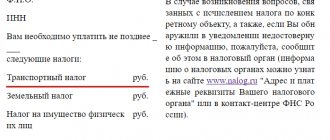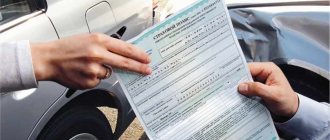Accurate calculation of compulsory motor liability insurance for insurance companies
Go to the express calculator
With a minimum base rate of RUB 27,466.11.
With a maximum base rate of RUB 27,466.11.
What is the base rate? This is an amount in rubles, which is multiplied by coefficients determined by the insurance parameters (for example, the region of registration of the owner, the power of the vehicle, motor vehicle, etc.) and the cost of the MTPL policy is obtained. Each insurance company chooses the base rate at its own discretion from the range permitted by the Central Bank of the Russian Federation and specified in Federal Law No. 40 “On Compulsory Motor Liability Insurance”.
Make accurate calculations for insurance companies
This is a complete MTPL calculator with the latest changes from September 7, 2021. These rates are also valid in 2021.
One of the advantages of the OSAGO calculator is the transparency of the insurance system and the ability of the car owner to calculate the price in advance
Online calculation using the OSAGO calculator has a number of advantages compared to independent calculations.
These include:
Insurance coefficients for calculating compulsory motor liability insurance
When calculating the price of car insurance, the following coefficients are used.
Vehicle engine power
The higher this indicator, the higher the coefficient that increases the price of the policy. So, for cars with an engine up to 50 hp. it is equal to 0.6, but for a car with a power of more than 150 “horses” the multiplying factor is already 1.6.
Region in which the policyholder is registered
An increasing territorial compulsory motor liability insurance coefficient is also applied here, varying from 0.6 to 2. It is highest for large cities with high traffic density, and lowest for small towns and rural areas.
View for other cities
Driving experience
Your driving experience also directly affects your insurance price. The greater the driving experience, the lower the coefficient: the minimum is 1, and the maximum, for novice drivers, is 1.8.
Number of drivers
The number of drivers allowed to drive this vehicle. There are individual policies on sale that cover a limited number of drivers, and insurance without restrictions on the number of people allowed to drive a given car. Individual insurance will have a coefficient of 1, but for an “unlimited” policy this figure increases to 1.8.
Insurance period
The minimum policy validity period allowed in our country is 3 months. In this case, the increasing coefficient is equal to 0.5, and with the standard duration of the insurance policy being 1 year, the coefficient is equal to one.
Gross violations by the insured person
This does not mean violations of traffic rules, but the clauses of the concluded insurance contract. For example, a car owner provided employees of an insurance company with deliberately false information, or was caught in other fraudulent activities. The coefficient in this situation is always 1.5.
KBM
The bonus-malus coefficient, or, as it is popularly called, the accident-free driving coefficient. Initially, when you first sign up for a car insurance policy, it is equal to 1. But, over time, it changes: with careful driving, it decreases, and if you get into an accident due to the driver’s fault, the coefficient for it increases. Consequently, next year insurance for a careless car owner will cost more.
Do I need to insure a tractor under compulsory motor liability insurance?
If you carefully study the rules, it will become clear that tractor insurance under the MTPL policy is mandatory. For this category of transport, a basic indicator has also been defined, which ranges from 1,124 to 1,579 rubles.
Insurance is required because:
- this type of transport moves on state roads;
- the driver of this vehicle may cause harm to another.
Documents for insurance for a tractor
In order to issue an insurance policy for a tractor, you will need to provide the following package of documents to the insurance company:
- Identity document (passport);
- PTS;
- certificate of registration of equipment in Gostekhnadzor;
- copies of driver's licenses of all persons allowed to drive.
If you are a legal entity, a representative of your organization will need to provide a certificate of registration of the vehicle with the tax service.
Also, in order to issue an MTPL policy for a tractor, it will be necessary to have a valid diagnostic card indicating that the technical inspection has been completed, namely the technical serviceability of the tractor.
What is taken into account when calculating using the OSAGO calculator for special equipment
When purchasing an MTPL contract, the insurer looks for the most profitable option for itself, depending on the terms of the insurance and its price. The base rate tariff corridor has been approved at the legislative level. Each region has its own base coefficient. There are adjustment indicators when calculating the cost of a policy, but they are identical for calculating the cost of a policy by different insurers.
When calculating the cost, the following data is taken into account:
- region of vehicle operation;
- seasonality of operation;
- KBM is an indicator that can either reduce or increase the cost of insurance;
- driving experience and age of persons included in the policy;
- technical data of the equipment;
- vehicle operation history.
You can calculate the cost of compulsory motor liability insurance for special equipment using our online calculator.
Insurance payments provided for by the MTPL policy for a tractor
The system of insurance payments under compulsory motor liability insurance in case of a traffic accident involving tractors and other vehicles is absolutely the same. The only condition: in the event of an insured event, the insurance policy for the tractor must be properly issued.
After this, third parties injured as a result of the accident submit an application to the insurance company, a calculation of the damage is carried out, after which the insurer pays an amount equal to the damage caused.
Regarding damage to a vehicle, the damage repair system is currently predominantly in effect. That is, the insurance company pays for repairs directly to accredited car service and repair stations, rather than paying money to the victims.
We think that it is not worth saying that this is not always the best solution for the injured party. And it is clear that insurers are trying to save money on this, as a result of which the injured party may also become a victim of poor-quality repairs and long deadlines.
Therefore, here it is worth noting that MTPL insurance policies for tractors are provided exclusively by leading insurance companies, which is a guarantee that in the event of an insured event, money for repairs will be reimbursed in full, and the repair itself will be carried out in accordance with all requirements.
Money is paid to the victim only if the insurance company cannot provide repairs to the car in accordance with the requirements of the law.
OSAGO calculation formula, correct decoding of all coefficients
The price of the policy and all restrictions on certain tariffs are regulated at the state level.
If you know the final formula for calculating the tariff for compulsory motor liability insurance, it is not difficult to personally calculate the cost of the policy. Taking into account each moment and situation, you can reduce the cost of insurance and save significantly.
The formulas are as follows.
For physical
persons and individual entrepreneurs: T = TB multiplied by CT multiplied by KBM multiplied by KVS multiplied by KO multiplied by KM multiplied by KS multiplied by KN. For legal entities: T = TB multiplied by CT multiplied by KBM multiplied by KO multiplied by KM multiplied by KS multiplied by KN multiplied by Kpr. KO is equal to 1.87.
The abbreviations above are explained as follows:
T - total cost of insurance;
TB is a basic tariff in which the value corresponds to any type of vehicle (see Table 1 below).
CT - coefficient for the territory where the transport in question was registered;
KBM - and this is the so-called. Bonus-Malus (that is, whether there were situations of insurance payments during the validity of the previous contracts with OSAGO. Simply, if a person drove for a long time without accidents, then if an accident does occur, he will be paid significantly more);
PIC - determines the driver’s age and experience (see Table 2 below).
KO - coefficient of data on the number of drivers who have the right to drive this transport (see Table 3 below).
KM is the power factor of the vehicle engine (see Table 4).
KS is the coefficient of the period of transport use (Table 5).
KN is the coefficient of presence of violations, which is provided for in paragraph 3 of Article 9 of the Federal Law on Compulsory Motor Liability Insurance (6 Table).
Basic fare information
The coefficient on the base tariff remains unchanged in all areas and regions. The size of the tariff is determined by the characteristics of transport, such as:
- Its carrying capacity;
- Passenger capacity.
Thanks to this, all transport has a basic tariff, which cannot be changed at the request of insurance companies.
Territorial tariff
This tariff is determined by whether the vehicle belongs to a particular region of the country. Its indicators strongly depend on the size of the locality:
- If we are talking about a large city (a million inhabitants or more), the tariff is high;
- If a small city has less than 1 million inhabitants, it is lower.
For example, in St. Petersburg the coefficient is 2, and in the Leningrad region it is only 1.7.
Bonus-Malus
This tariff allows you to get a discount if you have not had an accident for a long time. It should be remembered that such a bonus is assigned only to the driver, and under no circumstances is it calculated on the vehicle.
Age - experience
Here the coefficient is defined as follows:
- Maximum age - no restrictions;
- If you are very old and have a long experience, then the PIC decreases.
Limitation
KO is calculated according to the number of drivers who are included in the contract: either a limited policy (then up to five people are included), or an unlimited one.
Periodicity
Often people apply for compulsory motor liability insurance only for the period of use of their transport. For their convenience, a seasonal policy is used, which provides for a minimum period for the duration of the insurance.
Table 1. TB by vehicle category
| Vehicle category | Tariff, rub. | |
| Min | Max | |
| Motorcycles, mopeds, transport categories “A”, “M” | 694 | 1407 |
| Passenger transport physical. persons, category “B” and “BE” | 2 746 | 4 942 |
| Passenger transport legal. persons, category “B” and “BE” | 2 058 | 2 911 |
| Passenger transport category “B” and “BE”, which is used as a taxi | 4 110 | 7 399 |
| Freight transport, category “C”, weighing up to 16 tons | 2 807 | 5 053 |
| Freight transport, category “C”, weighing more than 16 tons | 4 227 | 7 609 |
| Bus, category “D”, “DE” with a number of passenger seats up to 16 | 2 246 | 4 044 |
| Bus, category “D”, “DE” with more than 16 passenger seats | 2 807 | 5 053 |
| Bus, category “D”, “DE”, which are used as a taxi or for the purpose of transporting people | 4 110 | 7 399 |
| Trolleybuses | 2 246 | 4 044 |
| Trams | 1 401 | 2 521 |
| Tractors and other self-propelled road construction equipment | 899 | 1 895 |
Table 2. PIC – ratio of driver’s age and experience
| quantity years | Experience | |||||||
| 0 | 1 | 2 | 3-4 | 5-6 | 7-9 | 10-14 | More than 14 | |
| 16 -21 | 1,87 | 1,66 | ||||||
| 22 -24 | 1,77 | 1,04 | ||||||
| 25 -29 | 1,77 | 1,69 | 1,63 | 1,01 | ||||
| 30 -34 | 1,63 | 0,96 | ||||||
| 35 -39 | 0,99 | 0,96 | ||||||
| 40 -49 | 0,96 | |||||||
| 50-59 | ||||||||
| More than 59 | 1,6 | |||||||
Table 3. KO - persons allowed to drive a vehicle
| Number of persons allowed to drive a vehicle | Coefficient |
| If the number of people driving the transport is limited | 1 |
| If there are no restrictions on the number of people who could operate the machine | 1.8 |
Table 4. TM – value for vehicle engine power
It’s worth making a small disclaimer here. As a rule, in the car’s passport the power is written in kilowatts, and in order to calculate the coefficient, you must know the horsepower; a simple formula is used for recalculation: 1 kilowatt equals 1.35962 horsepower.
| Engine power (horsepower) | Coefficient |
| Up to 50 | 0.6 |
| 50-70 | 1 |
| 70-100 | 1.1 |
| 100-120 | 1.2 |
| From 120 to 150 | 1.4 |
| More than 150 | 1.6 |
Table 5. KS - use of vehicle
| Vehicle use period (in months) | Coefficient |
| 3 | Coeff. 0.5 |
| 4 | Coeff. 0.6 |
| 5 | Coeff. 0.65 |
| 6 | Coeff. 0.7 |
| 7 | Coeff. 0.8 |
| 8 | Coeff. 0.9 |
| 9 | Coeff. 0.95 |
| 10 or more | Coeff. 1 |
Table 6. CN – presence of violations
| What offense took place? | Factor |
| Giving deliberately false testimony | 1.5 |
| Leaving the scene of an accident | |
| Drunk driving | |
| Intentionally causing an accident | |
| Being in the driver's seat without permission in the contract |
How to apply for an insurance policy for a tractor online
Many owners of cars, special equipment, and in particular tractors, are interested in the question of whether it is possible to issue an insurance policy for a tractor online and how to do it, because not everyone is still accustomed to the fact that everything can now be done via the Internet.
However, it is worth using online services at least once to become a real fan of this method of solving many issues. In addition, trips to the insurance company take a lot of time and effort, and also cost some money.
You can easily buy an electronic insurance policy for a tractor. First you need to find an insurance company that offers such a service, and in particular.
After this, we will provide you with access (personal account) to the online platform of one of the leading insurance companies, where you can fill out all the data and attach documents online, thereby independently issuing a compulsory insurance policy for the tractor. The MTPL policy, in turn, will be sent to your email. Everything is as simple as two! Just try it!










